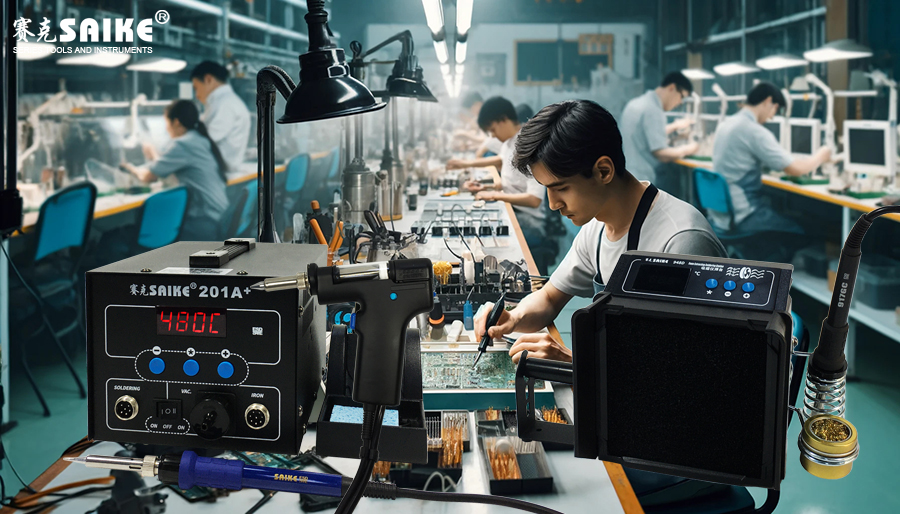
SK-YJ000HT-KP 100032
Welding precious metals is a key technique in jewelry making and repair. Precious metals such as gold, silver, platinum, and palladium require special welding skills and careful operation due to their unique physical and chemical properties. This article will introduce the methods and related precautions for welding precious metals on a soldering station, helping jewelry makers and repair experts achieve the best welding results.
I. Basic Methods for Welding Precious Metals
1.Welding Preparation
– Cleaning materials: Ensure that all welding surfaces are clean and free of grease and oxide layers. Use a non-residual cleaner (such as isopropanol) to clean the metal surfaces.
– Appropriate solder selection: Choose suitable solder according to the type of precious metal. For example, gold solder usually includes several options with different melting points to adapt to different applications and design requirements.
– Proper flux use: Flux can help remove oxide layers, prevent the formation of new oxide layers, and promote solder flow. It is essential to choose a flux compatible with precious metals.
2.Welding Process
– Temperature control: Use an adjustable temperature soldering station to precisely control the welding temperature. The temperature for welding precious metals is usually lower than that for ordinary metals to prevent material overheating and damage.
– Soldering iron use: Use a fine-tipped soldering iron for welding to improve welding accuracy and avoid heating unnecessary surrounding areas.
– Welding technique: Adopt the “heating-applying solder-rapid cooling” method. The solder should be placed directly on the heated area, not on the soldering iron tip, to ensure proper solder flow through capillarity.
3.Post-welding Processing
– Cleaning and polishing: After welding is completed, remove all remaining flux residues and restore the metal’s luster using appropriate polishing methods.
– Checking solder joints: Inspect the structural integrity of the solder joints and confirm there are no cracks, holes, or incomplete soldering issues.
II. Precautions
1.Temperature Management
– Preventing overheating: Overheating may cause burns to precious metals, changing their color or directly damaging the structure. Use the temperature control function of the soldering station to avoid this situation.
2.Material Compatibility
– Solder selection: Ensure that the solder composition is compatible with the base metal to avoid corrosion or strength degradation.
3.Welding Environment
– Dust-free operation: Precious metals are very susceptible to contamination. Operate in as clean an environment as possible to avoid introducing any external factors that may contaminate the metal.
III. Safety Measures
– Protective equipment: Wear appropriate protective glasses and gloves, especially when handling high temperatures and potentially harmful fluxes.
– Ventilation facilities: Ensure good ventilation, especially when using fluxes containing chemicals, to avoid inhaling harmful gases.
IV. Conclusion
Welding precious metals on a soldering station requires precise operation and high attention. Every step must be careful to ensure the quality and safety of the final product. By following the above welding methods and precautions, the welding quality can be effectively improved, extending the lifespan of jewelry and ensuring the safety of the manufacturing process. Additionally, continuous skill improvement and adaptation to new technologies are key to successful jewelry welding.


